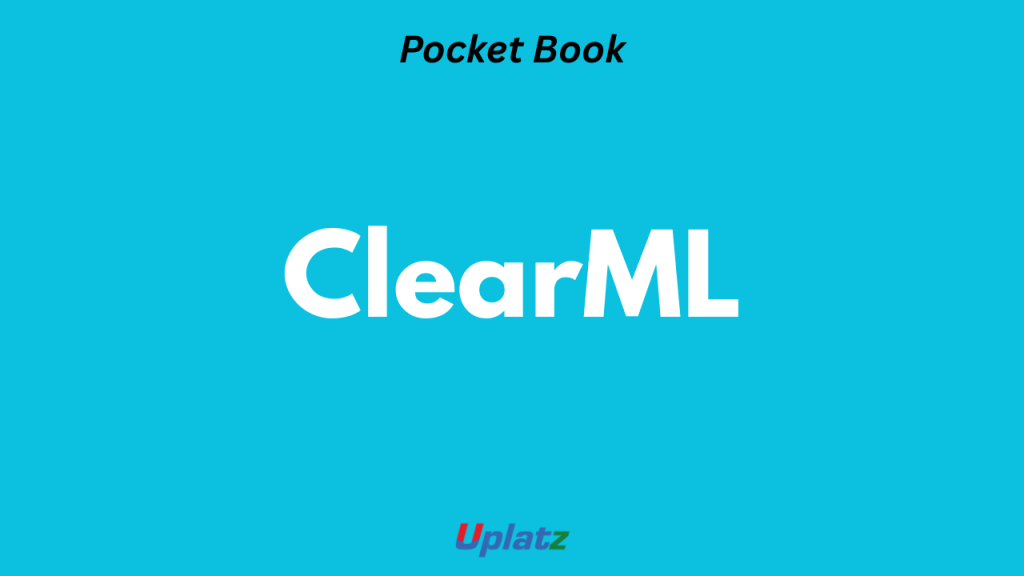
ClearML Pocket Book — Uplatz
50 deep-dive flashcards • Wide layout • Fewer scrolls • 20+ Interview Q&A • Readable code examples
1) What is ClearML?
ClearML is an open-source MLOps suite providing experiment tracking, orchestration, dataset versioning, and model deployment. It unifies DevOps and ML workflows to improve reproducibility, collaboration, and scalability for ML projects. It can run on-premises, cloud, or hybrid environments.
pip install clearml
clearml-init # configure credentials2) Why ClearML? Strengths & Tradeoffs
Strengths: End-to-end platform, lightweight integration (just a few lines of code), rich UI, supports distributed orchestration. Tradeoffs: Requires server setup for enterprise, complexity grows with scale, and advanced use cases may need tuning of agents and queues.
from clearml import Task
Task.init(project_name="Demo", task_name="exp1")3) MLOps: Mental Model
MLOps combines DevOps with ML workflows. ClearML covers experiment tracking, pipeline orchestration, data versioning, and serving. Think of it as GitHub + CI/CD but for ML artifacts (code, data, models, metrics).
# Log metrics
logger = task.get_logger()
logger.report_scalar("accuracy", "val", iteration=1, value=0.9)4) Core Components
Key modules: ClearML SDK (Python client), ClearML Server (UI, API, DB), ClearML Agent (executes jobs), and ClearML Enterprise (scaling, multi-tenant). Together, they provide reproducibility and automation.
# CLI
clearml-agent daemon --queue default5) ClearML vs Other Tools
Compared to MLflow, ClearML provides deeper orchestration, task queuing, and dataset management. Compared to Weights & Biases, it offers on-prem deployment and stronger pipeline orchestration at the cost of smaller ecosystem.
# MLflow-like simplicity + orchestration
Task.init(project_name="proj", task_name="exp")6) Deployment Options
Run ClearML Server locally with Docker Compose or use hosted ClearML SaaS. Enterprise teams deploy on Kubernetes with auto-scaling agents. Self-hosting provides data sovereignty, SaaS offers ease of use.
docker-compose -f docker-compose.yml up -d7) Projects, Tasks & Queues
Organize work into Projects. A Task represents an experiment or pipeline step. Queues hold tasks for Agents to execute. This abstraction makes scaling experiments seamless.
task = Task.init(project_name="NLP", task_name="bert-training")8) Releases & Versions
ClearML evolves rapidly. Pin SDK and server versions for stability. Track changelogs for new integrations like Hugging Face, TensorBoard, or Kubernetes improvements.
pip install clearml==1.x.y9) Authentication
Authentication uses API keys. Users configure credentials with clearml-init or environment variables. Enterprise integrates with SSO and role-based access control (RBAC).
CLEARML_API_ACCESS_KEY=...
CLEARML_API_SECRET_KEY=...10) Q&A — “Why ClearML over MLflow?”
Answer: ClearML includes experiment tracking like MLflow but adds orchestration, pipelines, queues, agents, and dataset management, making it more complete for enterprise MLOps scenarios.
